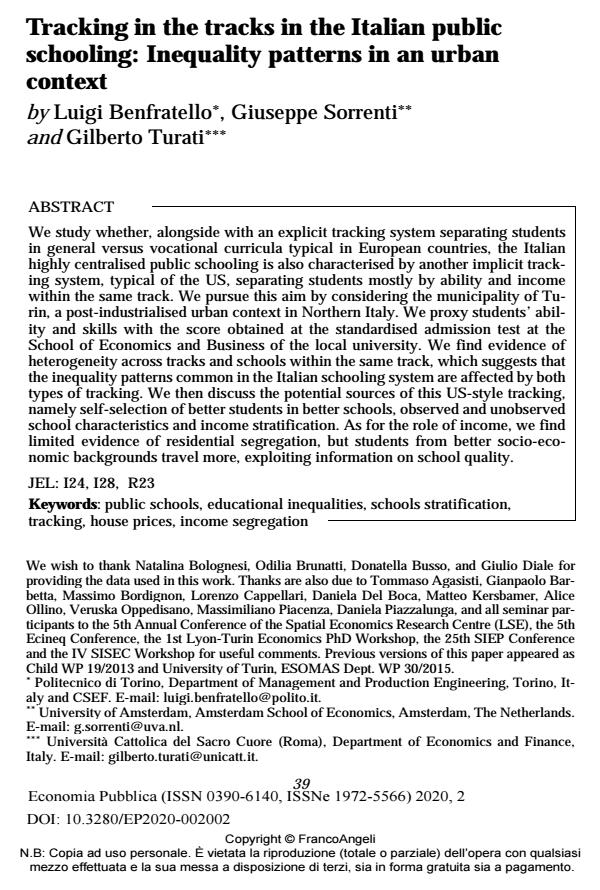Tracking in the tracks in the Italian public schooling: Inequality patterns in an urban context
Titolo Rivista ECONOMIA PUBBLICA
Autori/Curatori Luigi Benfratello, Giuseppe Sorrenti, Gilberto Turati
Anno di pubblicazione 2020 Fascicolo 2020/2
Lingua Inglese Numero pagine 32 P. 39-70 Dimensione file 277 KB
DOI 10.3280/EP2020-002002
Il DOI è il codice a barre della proprietà intellettuale: per saperne di più
clicca qui
Qui sotto puoi vedere in anteprima la prima pagina di questo articolo.
Se questo articolo ti interessa, lo puoi acquistare (e scaricare in formato pdf) seguendo le facili indicazioni per acquistare il download credit. Acquista Download Credits per scaricare questo Articolo in formato PDF

FrancoAngeli è membro della Publishers International Linking Association, Inc (PILA)associazione indipendente e non profit per facilitare (attraverso i servizi tecnologici implementati da CrossRef.org) l’accesso degli studiosi ai contenuti digitali nelle pubblicazioni professionali e scientifiche
We study whether, alongside with an explicit tracking system separating students in general versus vocational curricula typical in European countries, the Italian highly centralised public schooling is also characterised by another implicit tracking system, typical of the US, separating students mostly by ability and income within the same track. We pursue this aim by considering the municipality of Turin, a post-industrialised urban context in Northern Italy. We proxy students’ ability and skills with the score obtained at the standardised admission test at the School of Economics and Business of the local university. We find evidence of heterogeneity across tracks and schools within the same track, which suggests that the inequality patterns common in the Italian schooling system are affected by both types of tracking. We then discuss the potential sources of this US-style tracking, namely self-selection of better students in better schools, observed and unobserved school characteristics and income stratification. As for the role of income, we find limited evidence of residential segregation, but students from better socio-economic backgrounds travel more, exploiting information on school quality.
Parole chiave:Public schools, educational inequalities, schools stratification, tracking, house prices, income segregation
Jel codes:I24, I28, R23
Luigi Benfratello, Giuseppe Sorrenti, Gilberto Turati, Tracking in the tracks in the Italian public schooling: Inequality patterns in an urban context in "ECONOMIA PUBBLICA " 2/2020, pp 39-70, DOI: 10.3280/EP2020-002002